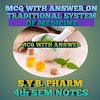SCOPE OF MICROBIOLOGY
There is vast scope in the field of microbiology due to the advancement in the field of science and
technology.
The scope in this field is immense due to
the involvement of microbiology in many fields like
medicine,
pharmacy, diary, industry, clinical research, water industry, agriculture, chemical
technology
and nanotechnology.
Food microbiology:- Food microbiology involves the prevention of spoilage
of food and
food borne diseases such as botulism (A rare poisoning
caused by toxin produced by clostridium
botulinum bacteria be
spread in food) and salmonellosis (An infection with salmonella bacteria,
commonly caused by contaminated food or water).
Food
microbiology also concerned with the study of microbes which are used in
various food
& dairy industries to
produce various food products like cheese, pickles,
yogurt, vinegar, bread etc.
Production of Alcohols:- It also
concerned with the study of microbes
which also helped in
production of ethanol, butanol, beer,
wine etc by fermentation process.
E.g.
The fungus yeast convert the solution of water & sugar in
to butanol by fermentation process.
Agriculture microbiology:- Agriculture microbiology
is concerned with the study of micro organism
which
are helpful for plant growth, development and enhance the
quality of plants.
The
influence of microbes on agriculture; the prevention of
the diseases that mainly damage the
useful crops.
Currently
there is a great interest in using bacterial
or viral insect pathogens as substitute
for
chemical pesticides.
Many
microbial cells present in soil play an important role in soil fertility, herbicidal, insect
resistance, and enhance quality of plant products.
E.g. Rhizobioum species, Azotobactor, Agrobacterium rhizogens.
Genetics engineering:- Genetic
engineering field concerned with the study of Microbes are used in
recombinant DNA technology to manipulate their gene for the
production of enzymes, hormones,
interferon's and many other useful
products for human being.
Industrial
microbiology:It is the
branch of microbiology that deals with conversion of large amount
of substrate
in to economically important product by use of micro-organism.
Microbes are used in economic
and industrial purposes and also used to make products such as
antibiotics, vaccines,
steroids, alcohols and other solvents, vitamins, amino acids & enzymes.
E.g. Protease amylase from bacillus, Methanococcus is used for production of methane
in
fuel industry.
Ecology
and environment:- Bacteria
are primary decomposer as they recycle nutrients back in to
the environment. Some
bacteria are used as biopesticides to control insect pest.
Example.
Bacillus thuringiensis.
Microbial
physiology and Biochemistry: This field is concerned with the study of synthesis of
antibiotics and
toxins, microbial energy production, microbial nitrogen fixation, effects of chemical
and physical agents on microbial growth and survival etc.
Medicine: deals with the identification of plans and
measures to cure diseases of human and animals
which are infectious to them.
Clinical
and pharmaceutical microbiology:-
A.
Diagnosis of disease & treatment:- Different test are used to detect infectious microorganism.
E.g.
Elisa, Widal test – Typhoid –
bacteria salmonella typhimurium.
Antimicrobial susceptibility testing
is mainly used for selection of antibiotics for the treatment
of microbial infection.
B.
Production of antibiotics:- Many antibiotics are isolated from natural microorganism by
the process of fermentation.
E.g. Penicillin
from penicillium notatum
Streptomycin
from strptomyces griseus
Tetracyclins
from strptomyces aureofaciens.
C. Production of
vaccine:- Different types of vaccine are
produced from microorganism.
E.g. Rabies vaccine,
Anthrax vaccine, Cholera vaccine.
Immunology: This field is concerned with the study of
immune system to enhance the immune
power which
protect the body from pathogens.
CLICK BELOW TOPIC TO READ


















0 Comments
Please do not enter any spam link in the comment box.